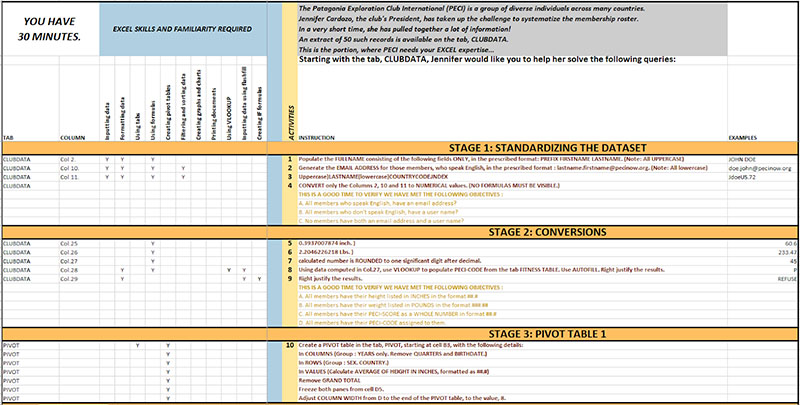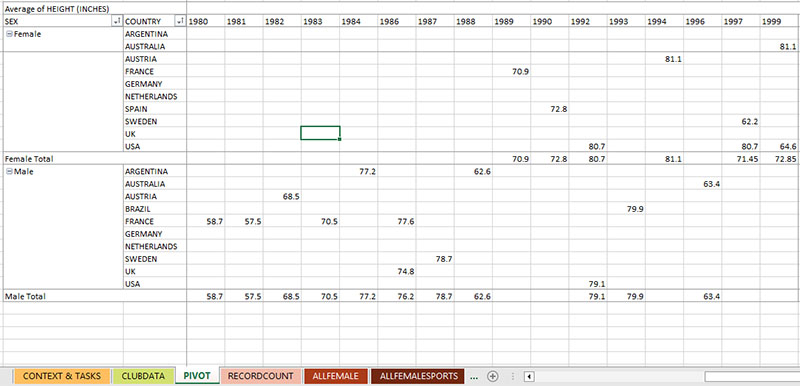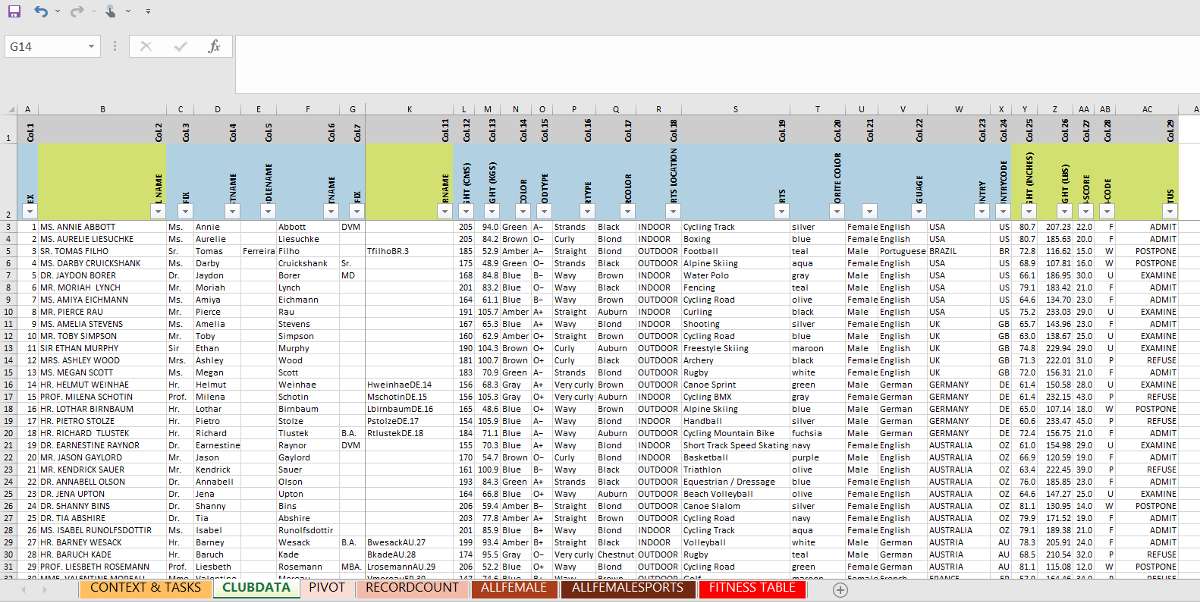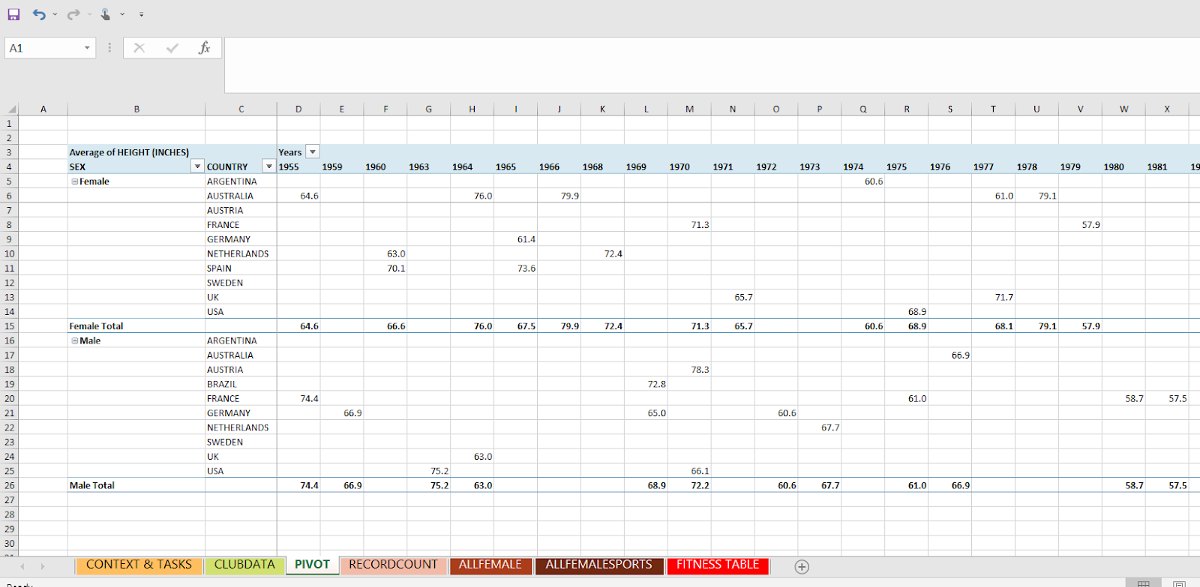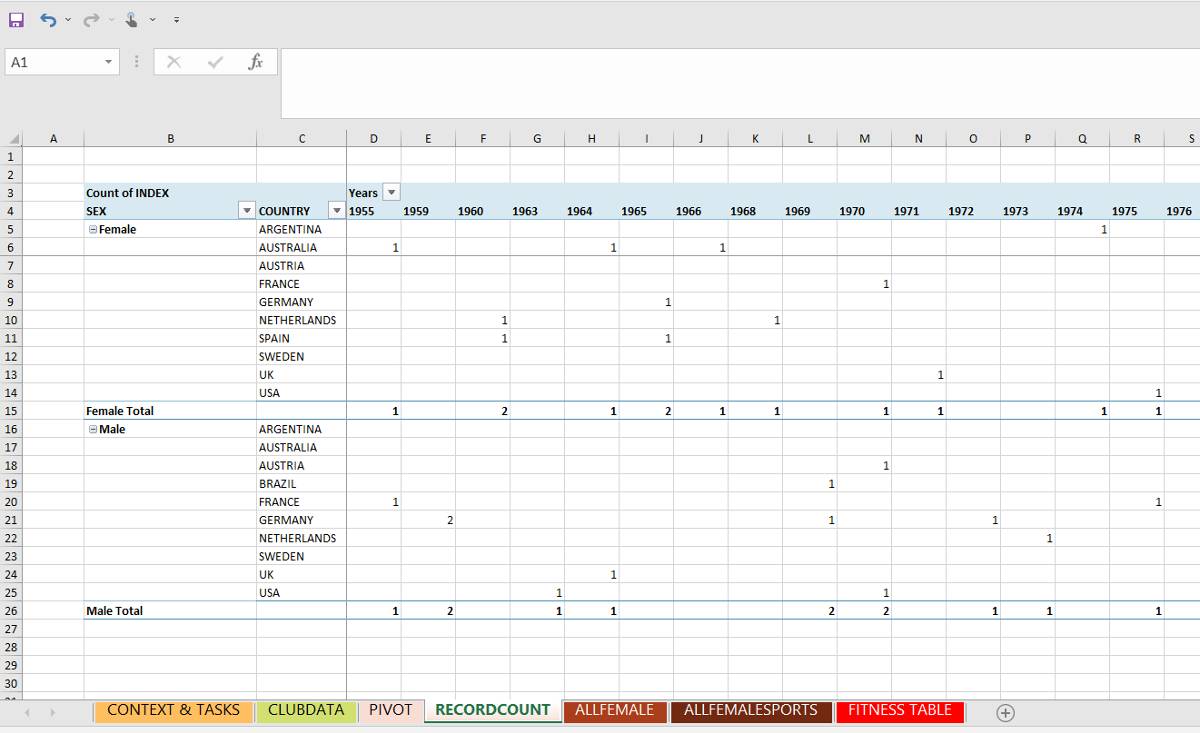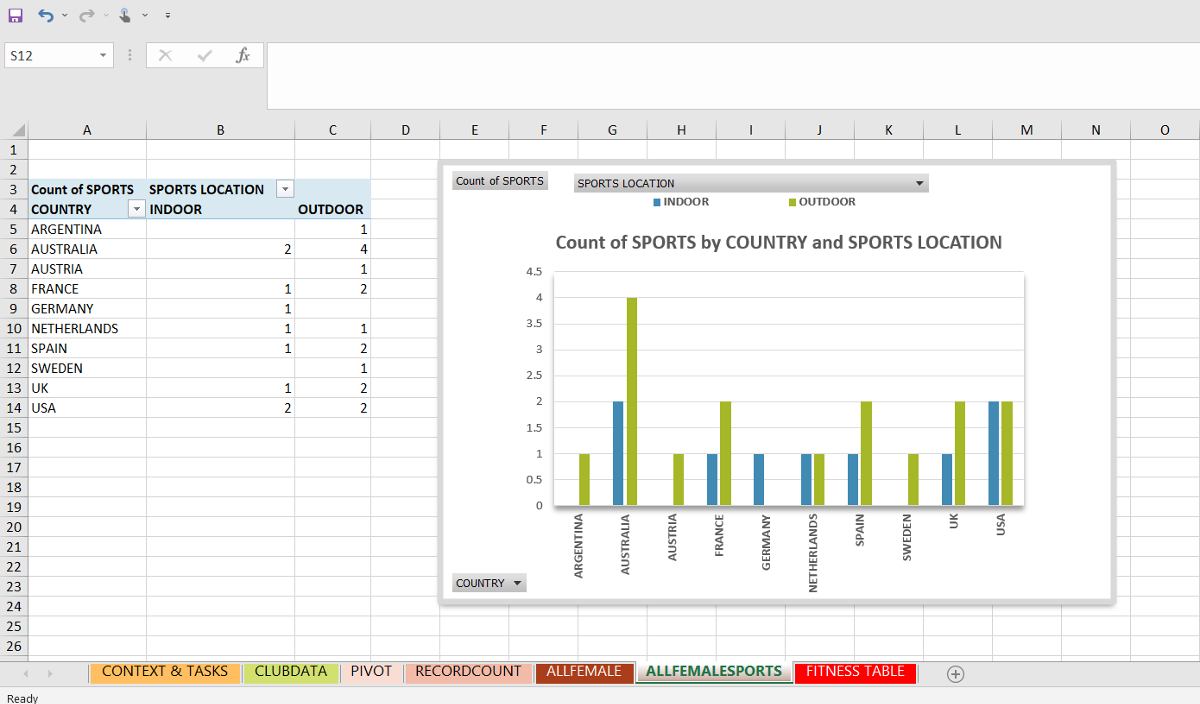When hiring for certain positions, you must ensure job applicants are well-versed in the qualifications for the role. For bookkeeping, accounting, and data analysis positions, Excel skills are vital. If you need a quick way to test applicants, use our free Excel test for interview candidates.
The test simulates data that might be included in a sports club’s client database. Having your applicants use and manipulate this data allows you to evaluate their ability to use formulas, VLookup, IF statements, and more in 30 minutes or less.
I also have an Excel test results file you can download for free. Armed with the results, you can weed out unqualified job applicants so you only hire candidates who meet your required qualifications.
Featured Partners
Free Excel test directions
Note that our Excel test for interview candidates contains data for a fictional company — the Patagonia Exploration Club International (PECI). When your applicant downloads the provided Excel test, they will see club information in multiple tabs — “Context & Tasks,” “Clubdata,” and “Fitness Table.”
Tab 1: Context & Tasks
The “Context & Tasks” tab includes the various Excel functions that will be tested and the instructions for performing those tasks using data provided across all three tabs. The information in the left columns (specifically columns C to M) shows the skills and familiarity required to complete the tasks in each stage.
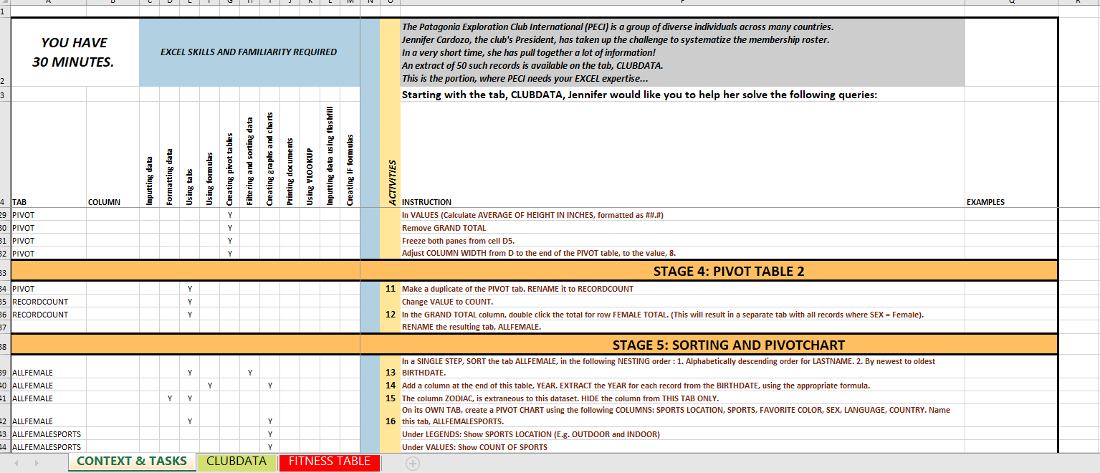
A snapshot of the “Context & Tasks” tab.
The Excel assessment test for interview consists of the following stages:
- Stage 1: Standardizing the dataset — This stage tests the applicant’s ability to process data between different types of variables.
- Stage 2: Conversions — This tests for formula conversion skills (i.e., centimeters to inches) and VLOOKUP (vertical lookup) function usage.
- Stage 3: Pivot Table 1 — This stage tests the applicant’s ability to create a pivot table.
- Stage 4: Pivot Table 2 — This tests the applicant’s ability to take an existing pivot table and change its values, creating new value tabs.
- Stage 5: Sorting and pivot chart — This tests the applicant’s ability to sort data within a pivot table or pivot chart.
- Stage 6: Print setup and output — This tests the applicant’s ability to create a header using Page Setup, as well as print the document to a PDF file.
Tab 2: Clubdata
The “Clubdata” tab lists the demographic information of all club members, such as name, birth date, gender, height, and weight. This data is mentioned in the “Context & Tasks” tab and your applicants will need it to complete the free Excel test.

The “Clubdata” tab has coded-column headings—those in blue contain test data and those in yellow require data inputs from applicants.
Tab 3: Fitness table
The “Fitness Table” tab contains three columns labeled PECI-SCORE, PECI-LEVEL and PECI-CODE. In the “Stage 2: Conversions” part of this test, applicants will use data collected to calculate the PECI-SCORE or fitness score and use VLOOKUP to populate the “Clubdata” tab’s PECI-CODE column using information from this tab.
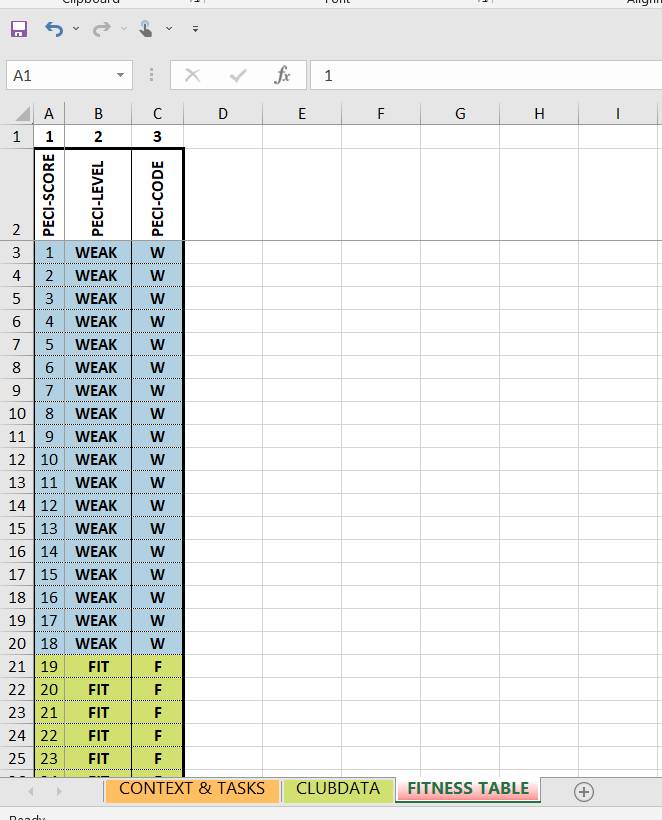
The “Fitness Table” tab contains reference data to calculate and classify fitness levels.
Excel test: Grading the results
Aside from the test file itself, you must download the Excel Test Results file. This contains the test answers, so do not send this file to your job applicants. It is for grading purposes only and should be used as a guide to examine how well the applicants performed on their Excel skills assessment.
Pay attention to individual questions and not just the final score. Some applicants may score lower overall but have more proficiency in the area you need.
The Excel Test Results file also has the same tabs as the Excel Test file but with additional sheets that show what the completed data should look like. For a peek at those tabs, check out the below images and what each results sheet illustrates about your candidate’s Excel capabilities.
How to facilitate an Excel test
The right time to give your Excel test for interview candidates is during the applicant screening part of the hiring process. You have the candidate’s commitment at this point, as they have learned they are in the running for the job and have been selected for an interview.
You can administer the test by email, remote proctoring, or in person, depending on your preference.
Excel skills to test
Depending on the position you need to fill, the job applicant’s qualifications and Excel skillset required might vary. Hiring for a front-office position or receptionist role requires an entirely different Excel skill set than looking for a bookkeeper or finance administrator.
Here are some common Excel skills to test interview candidates for:
- Data input and cleaning
- Data and cell formatting
- Data sorting or manipulation
- Database set up
- Using formulas and functions
- Pivot tables and pivot charts
- Data visualization
- VLOOKUP, XLOOKUP, and INDEX-MATCH
- Flash fill and Power Query basics
- Conditional formatting
- Data validation
- Macro basics
Certain Excel skills will be necessary for your specific open role. For example, a bookkeeper must know how to input accounts receivable and payable data and use formulas to create an accurate budgetary picture. A finance manager may need to know how to create charts to show a visual representation of where this month’s revenue is coming from.
I also recommend testing for the basics, regardless of position level. Applicants must prove they have the foundational element of Excel. Without that, they may not be able to complete more challenging tasks.
Alternative options to our free Excel test
While our free basic Excel test for interview candidates can help you evaluate applicant knowledge and proficiency in using this program, there are other options you can try.
Frequently asked questions (FAQs) about Excel tests
Yes, you can do this by asking questions about Excel formulas and functions. However, I recommend adding a hands-on test as this will help you gauge whether the applicants’ knowledge is only theoretical or if they can also solve actual Excel problems.
An Excel skills assessment test can cover basic to intermediate topics, depending on the position. Let’s say you’re looking for an administrative assistant. You can include test activities about sorting data, adjusting cell formats, and using basic formulas like SUM. However, if you’re hiring a financial analyst, you need to add advanced Excel topics, such as pivot tables and data validation commands.
Despite new data tools and AI assistants, Excel proficiency remains critical for many business roles. The ability to manipulate, analyze, and visualize data in Excel continues to be a fundamental business skill.



